This service collects data from Yandex.Wordstat: left and right column data for a given keyword and keyword frequency (base, “”, “!”). Useful when compiling an online semantic core.
The main benefit of our Wordstat parser is that there’s no need to buy proxies, and it’s anti-captcha. No special settings are required. All you need to do here is specify your keywords, and you’ll get Yandex.Wordstat data in no time.
Step-by-step guide for working with the service:
Creating a task. To create a task, go to the Yandex Keyword Research tab and click on “Create new task”.
Step one: Search engine and region.
Here you need to enter a task name (obligatory field). You can enter any name; it is often convenient to enter the name of a site so that you can easily find the desired task in the future.
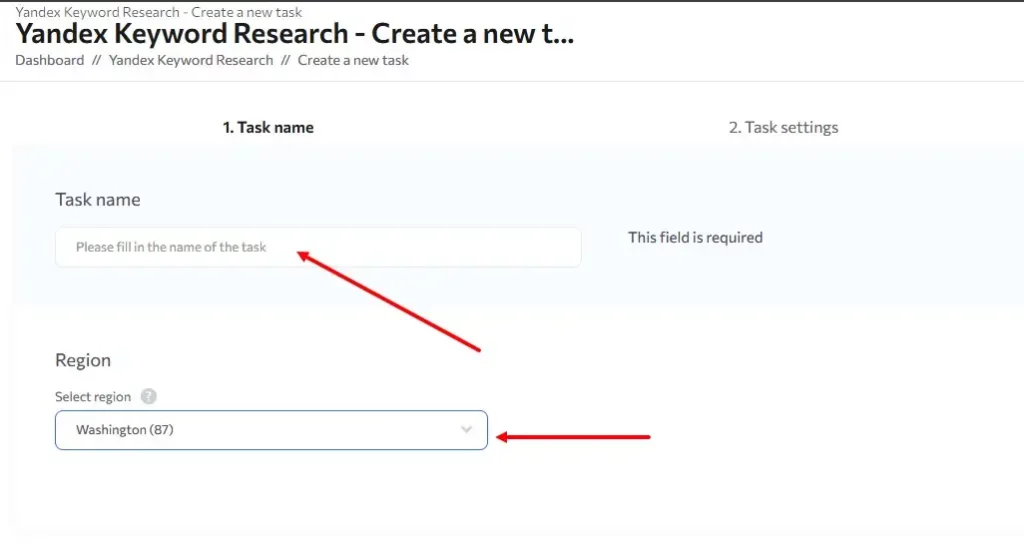
Step two: Task Settings
There are two checkboxes here, which will determine the type of task:
Yandex Keyword Research results in the left column.
Search Volume results (how many times a month a keyword has been queried)
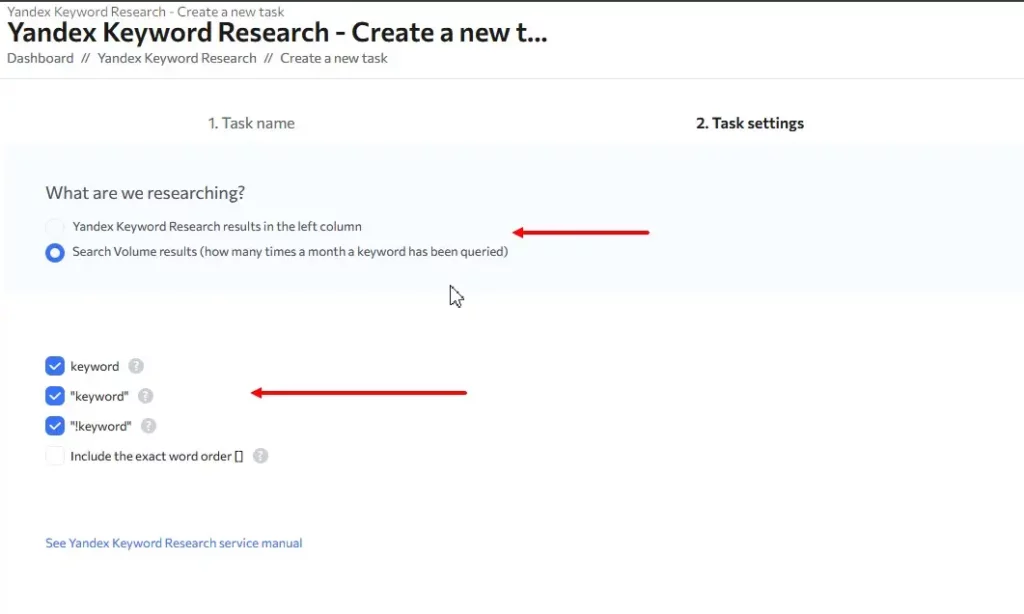
Yandex Keyword Research results in the left column – in this section, you can specify the number of pages of the Wordstat output the robot will go through.
Number of web pages to be parsed – the deeper the robot goes, the more keywords you can retrieve.
You can also select “Yandex Keyword Research results from the right column”. In this case, you will collect keywords from both the left and right columns of Wordstat.
Search Volume results (how many times a month a keyword has been queried)
Specify the type of search volume you want
Wordstat parsing uses a smart algorithm that bypasses the 7-word limit, which is in place when parsing through Yandex.Direct (parsing through Yandex.Direct is used by most SEO specialists when working in Key Collector).
Step three: Keywords and price
Load keywords.
You can load a list of keywords by copy-paste or through a file. Supported file formats: xls, xlsx. You have to specify the column from which the data is to be taken and whether the first row is to be taken into account.
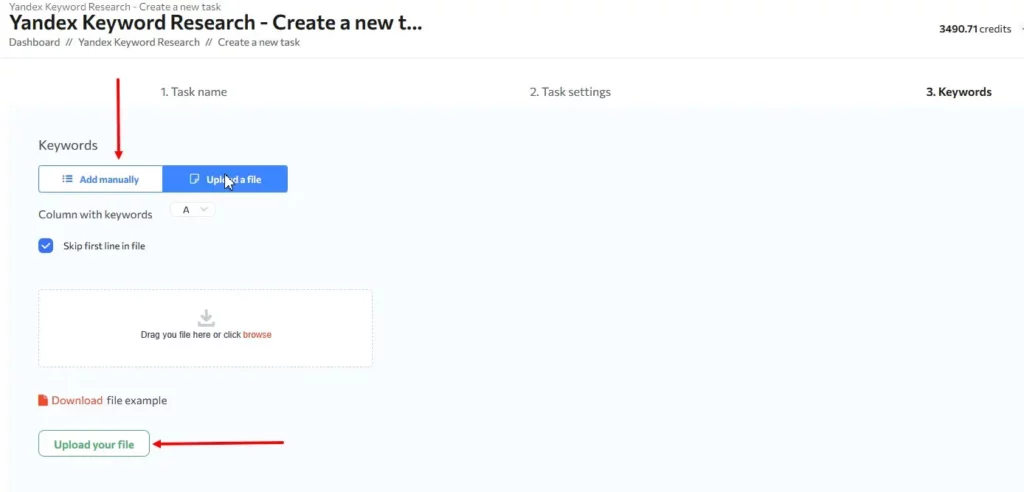
The negative-word functionality will filter your list and save you time and money. You can use a ready-made list of negative words – select negative words by subject and the region you want.
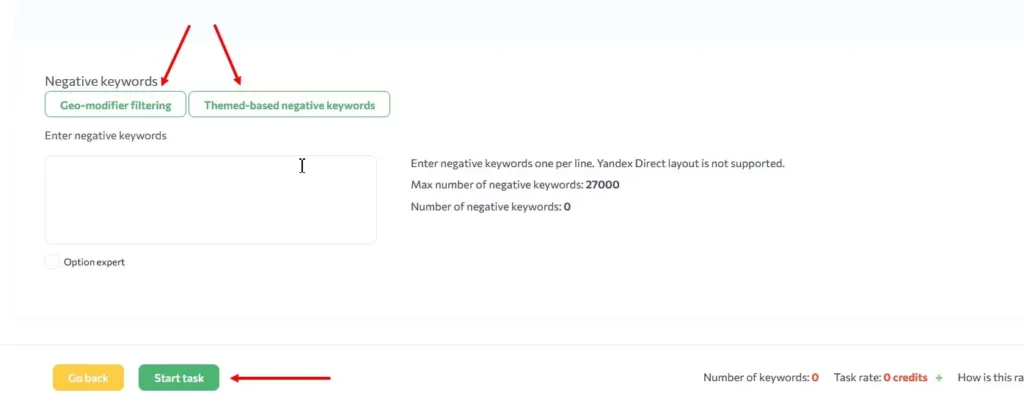
Then click on “Start task”.
The task list page shows the status of the task.
In queue – no data has been collected yet.
Parsing – the counter shows how many keywords have been processed.
Done – the .xlsx file can be downloaded next to it.
Once the processing is complete, you can send the file immediately for clustering.
The resulting file looks like this:
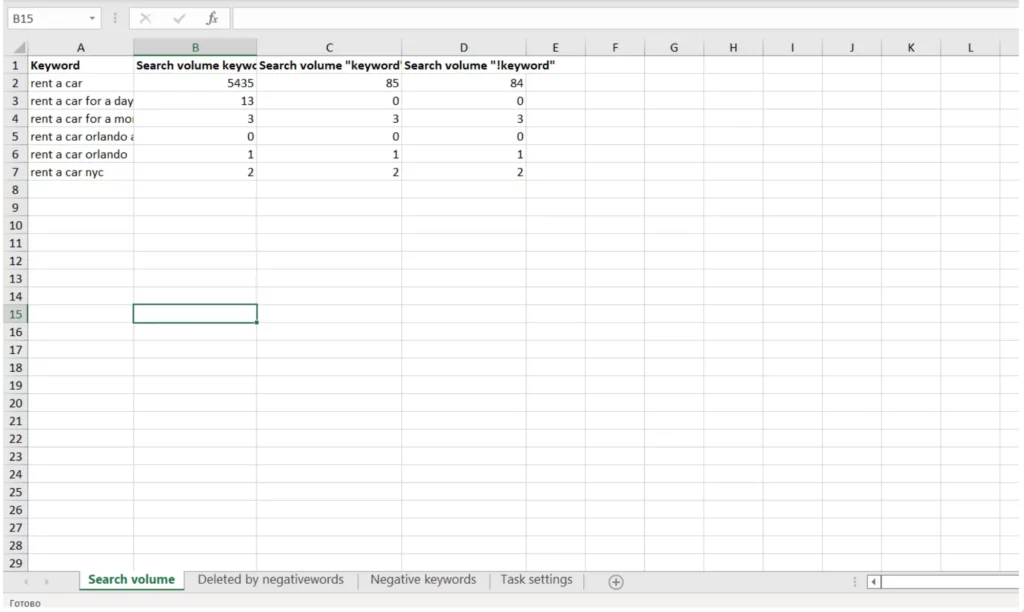
You can also create a Yandex Keyword Research task via
API – https://rush-analytics.com/api